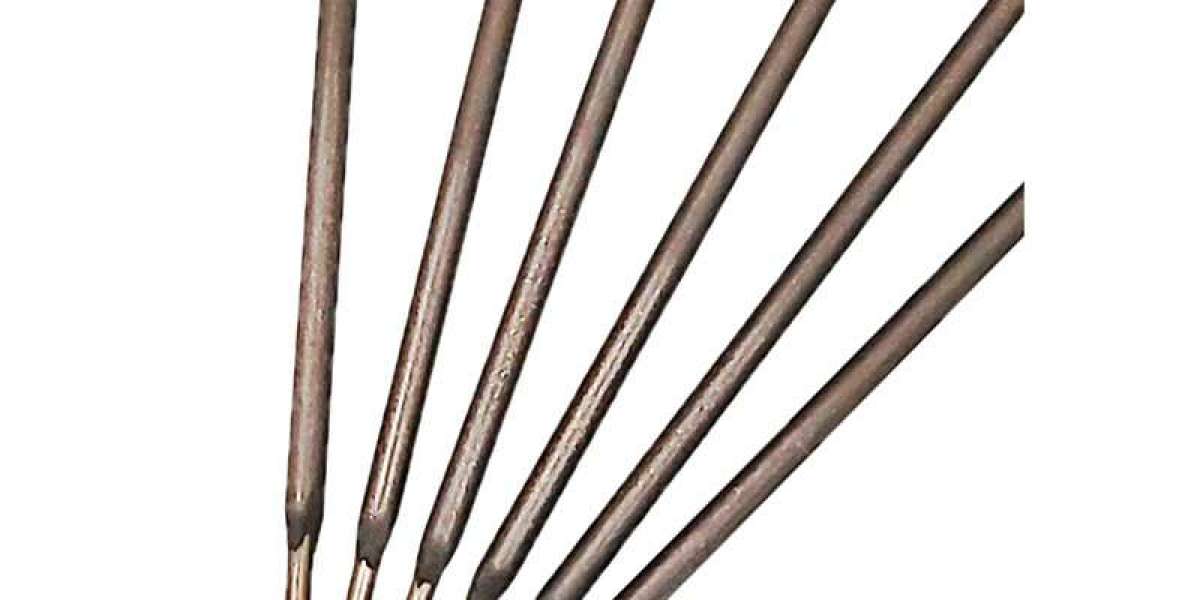Welding cast iron can be a challenging task, but with the right tools and techniques, it becomes manageable. One of the most reliable products for this job is the E41 cast iron stick welding electrodes. In this comprehensive guide, we will delve into the specifics of cast iron stick welding in Canada, focusing on the benefits of using E41 electrodes from Mapleweld. Whether you are a seasoned welder or just starting out, this guide will provide you with valuable insights to enhance your welding projects.
Understanding Cast Iron Welding
Cast iron is a popular material known for its excellent wear resistance and high compressive strength. However, it is also notorious for its brittleness and the challenges it presents during welding. Cast iron welding requires careful preparation, appropriate welding techniques, and the right type of electrode to achieve satisfactory results.
Why Choose E41 Cast Iron Stick Welding Electrodes?
E41 cast iron stick welding electrodes are specifically designed for welding cast iron and other similar materials. Here are some key benefits of using E41 electrodes:
High Deposition Rate: E41 electrodes provide a high deposition rate, which means faster welding speeds and increased efficiency.
Strong Welds: These electrodes produce strong, crack-resistant welds, ensuring the longevity and durability of the welded joints.
Ease of Use: E41 electrodes are user-friendly, making them suitable for both professional welders and beginners.
Versatility: They are compatible with various cast iron types, including gray, ductile, and malleable cast iron.
Preparing for Cast Iron Welding
Before diving into the welding process, proper preparation is essential to ensure successful welds. Here are some steps to follow:
Cleaning the Surface
Clean the surface of the cast iron workpiece thoroughly to remove any dirt, oil, grease, or rust. This can be done using a wire brush, grinder, or chemical cleaners. A clean surface ensures better electrode penetration and weld quality.
Preheating
Preheating the cast iron workpiece is crucial to prevent cracking during welding. The preheat temperature typically ranges from 250°F to 600°F, depending on the thickness and type of cast iron. Use an oxy-acetylene torch or an oven to evenly preheat the workpiece.
Selecting the Right Electrode
Choosing the right electrode is vital for successful cast iron welding. E41 cast iron stick welding electrodes from Mapleweld are an excellent choice due to their high quality and reliability. Ensure you have the correct size and type of electrode for your specific welding task.
The Welding Process
Once the preparation is complete, you can proceed with the welding process. Here’s a step-by-step guide to welding cast iron using E41 electrodes:
Setting Up the Equipment
Ensure your welding machine is set up correctly for stick welding. Adjust the amperage according to the thickness of the cast iron and the diameter of the electrode. Refer to the manufacturer’s guidelines for precise settings.
Striking the Arc
Hold the electrode at a slight angle to the workpiece and strike the arc. Maintain a short arc length to prevent the electrode from sticking to the workpiece. A steady hand and consistent arc length are essential for producing smooth welds.
Welding Technique
Use a weaving or circular motion while welding to ensure even distribution of the weld material. Weld in short sections to minimize heat buildup and reduce the risk of cracking. Allow the weld to cool slightly before proceeding to the next section.
Peening
Peening involves lightly hammering the weld bead with a chipping hammer immediately after welding. This helps relieve stress and prevent cracking. Be gentle to avoid damaging the weld.
Post-Weld Treatment
After welding, allow the workpiece to cool slowly to room temperature. Rapid cooling can lead to cracking and other defects. You can use insulating blankets to control the cooling rate.
Benefits of Cast Iron Stick Welding in Canada with Mapleweld
When it comes to purchasing welding supplies in Canada, Mapleweld is a trusted name in the industry. Here’s why you should choose Mapleweld for your cast iron welding needs:
High-Quality Products: Mapleweld offers premium E41 cast iron stick welding electrodes that are manufactured to meet stringent quality standards.
Competitive Pricing: Despite the high quality, Mapleweld maintains competitive pricing, making it an affordable choice for welders.
Expert Support: Mapleweld provides exceptional customer service and support, helping you select the right products for your projects.
Fast Shipping: With efficient shipping services, you can expect timely delivery of your welding supplies, ensuring your projects stay on schedule.
Tips for Successful Cast Iron Stick Welding
To achieve the best results with cast iron stick welding, consider the following tips:
Control Heat Input
Excessive heat can cause cracking and other defects in cast iron. Use low amperage settings and weld in short sections to control the heat input. Allow the workpiece to cool slightly between welds.
Use Proper Techniques
Mastering the correct welding techniques is crucial for successful cast iron welding. Practice striking the arc, maintaining a steady hand, and using the appropriate welding motion to achieve smooth, even welds.
Monitor Cooling Rates
Slow and controlled cooling is essential to prevent cracking. Use insulating blankets or other methods to control the cooling rate of the workpiece after welding.
Regular Maintenance
Regularly inspect and maintain your welding equipment to ensure optimal performance. Clean the electrodes and replace them as needed to maintain weld quality.
Common Applications of E41 Cast Iron Stick Welding Electrodes
E41 cast iron stick welding electrodes are versatile and can be used in various applications, including:
Repairing Cast Iron Machinery
E41 electrodes are ideal for repairing cracks and defects in cast iron machinery, such as engine blocks, gearboxes, and housings. The strong, crack-resistant welds ensure the longevity and reliability of the repaired components.
Joining Cast Iron Components
These electrodes are also suitable for joining cast iron components, such as pipes, fittings, and structural elements. The high deposition rate and strong welds make them an excellent choice for these applications.
Artistic Welding
Cast iron is often used in artistic welding projects, such as sculptures and decorative elements. E41 electrodes provide the precision and control needed to create intricate designs and strong, durable welds.
Conclusion
Welding cast iron can be challenging, but with the right tools and techniques, it becomes a manageable and rewarding task. E41 cast iron stick welding electrodes from Mapleweld offer excellent performance, reliability, and ease of use, making them an ideal choice for welders in Canada. By following the proper preparation and welding techniques, you can achieve strong, crack-resistant welds that stand the test of time. Trust Mapleweld for all your welding needs and experience the benefits of high-quality products and exceptional customer service. Visit Mapleweld today to purchase your E41 cast iron stick welding electrodes and take your welding projects to the next level.



